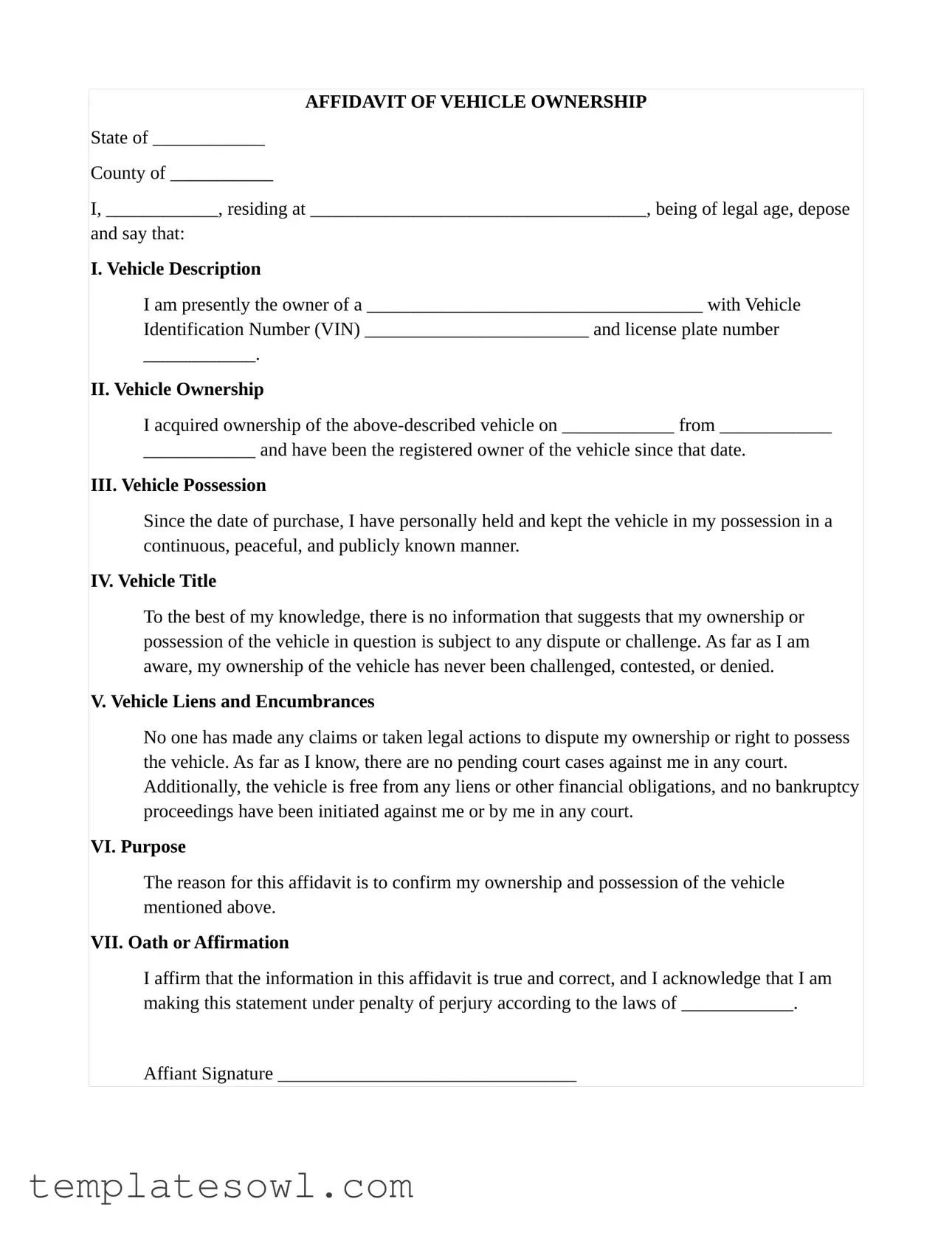What is a Motor Vehicle Ownership Affidavit form?
The Motor Vehicle Ownership Affidavit form is a legal document that individuals use to assert their ownership of a specific vehicle. It serves as an official affirmation, allowing vehicle owners to establish and confirm their rights to the vehicle in question. This form can be particularly useful in situations where the vehicle's title is missing or disputed.
Who needs to fill out this affidavit?
Anyone who owns a vehicle but may not have a clear title or who needs to assert ownership for legal reasons should consider filling out this affidavit. This could include individuals who have purchased a vehicle privately or those who have lost their title. The affidavit provides a legal backup for ownership claims.
What information is required on the form?
The form requires several pieces of information, including the owner's name and address, the vehicle's make, model, year, Vehicle Identification Number (VIN), and license plate number. Additionally, it requires details about how ownership was acquired and affirmations regarding the absence of liens or legal challenges against the vehicle.
How is this affidavit different from a vehicle title?
The affidavit is not a replacement for a vehicle title. Instead, it serves as a supplementary document to support claims of ownership. If the title is lost or unavailable, the affidavit can help establish legitimacy and ownership in the eyes of the law and other parties, such as insurance companies or potential buyers.
Is the affidavit legally binding?
Yes, the Motor Vehicle Ownership Affidavit is a legally binding document once it is signed and notarized. The owner declares under penalty of perjury that the information provided is accurate. Thus, it is essential to ensure that all statements made in the affidavit are truthful and correct.
Do I need a notary to complete this affidavit?
Yes, you will need to have the affidavit notarized to make it officially valid. A notary public will verify your identity and witness your signature on the affidavit. This step is crucial, as it adds an extra layer of credibility to your ownership claim.
What if there are liens on my vehicle?
If there are existing liens against your vehicle, it is essential to resolve those issues before submitting the affidavit. The form asserts that the vehicle is free from any financial obligations or legal claims. If this is not the case, filling out the affidavit could lead to legal complications.
How do I submit the completed affidavit?
The submission process may vary by state or county. Typically, you will present the notarized affidavit to your local Department of Motor Vehicles (DMV) or equivalent authority. Check with your local DMV for specific instructions on how they handle ownership affidavits, including any supporting documents you may need to provide.
Can I use this affidavit for a vehicle I inherited?
Yes, you can use the Motor Vehicle Ownership Affidavit if you inherited a vehicle. However, you may also need to provide additional documents, such as a death certificate or probate records, to establish your legal right to claim ownership. Always check with local authorities to ensure you comply with any specific requirements.
What should I do if my affidavit is challenged?
If someone disputes your ownership after you submit the affidavit, it’s crucial to gather all relevant documents that support your claim. This includes any purchase agreements, previous registrations, and communications regarding the ownership. Seeking legal advice may also be beneficial if a challenge arises, as having a clear understanding of your rights and options will help you navigate the situation effectively.


